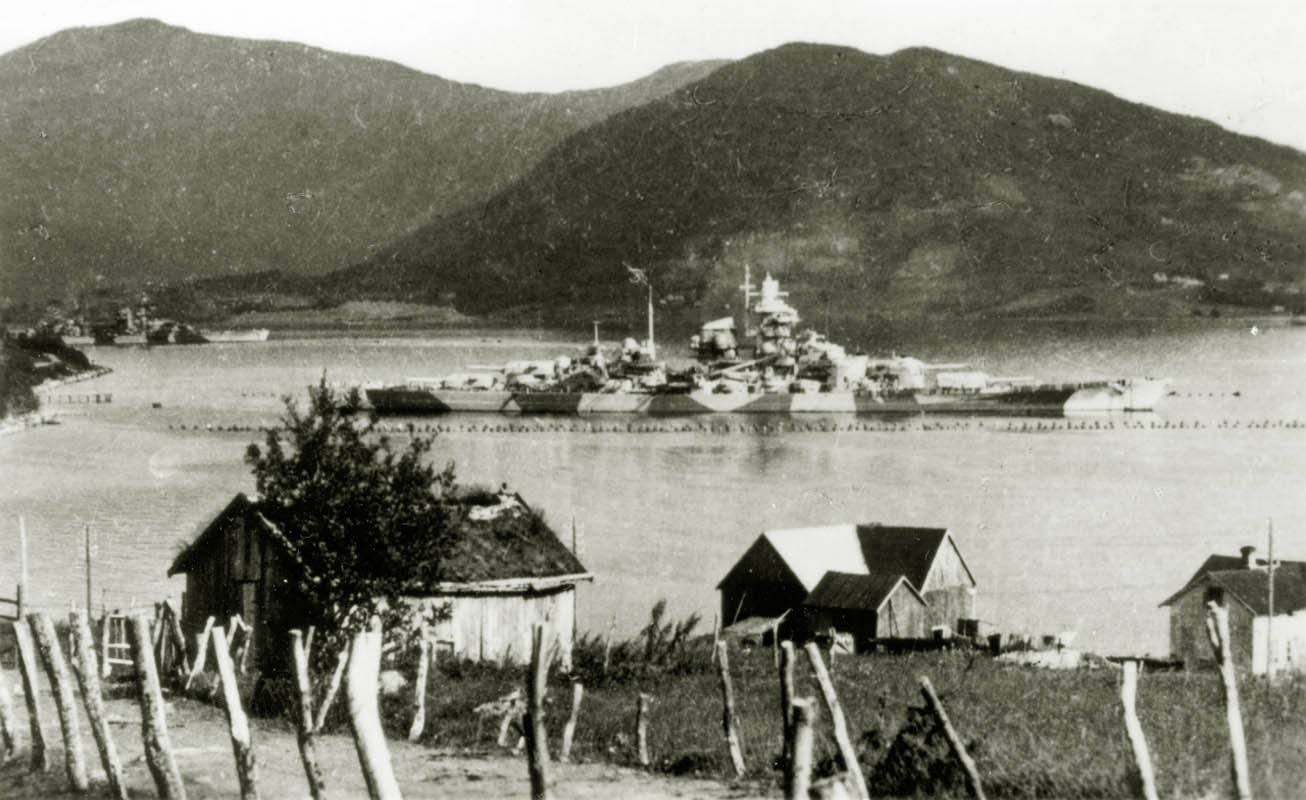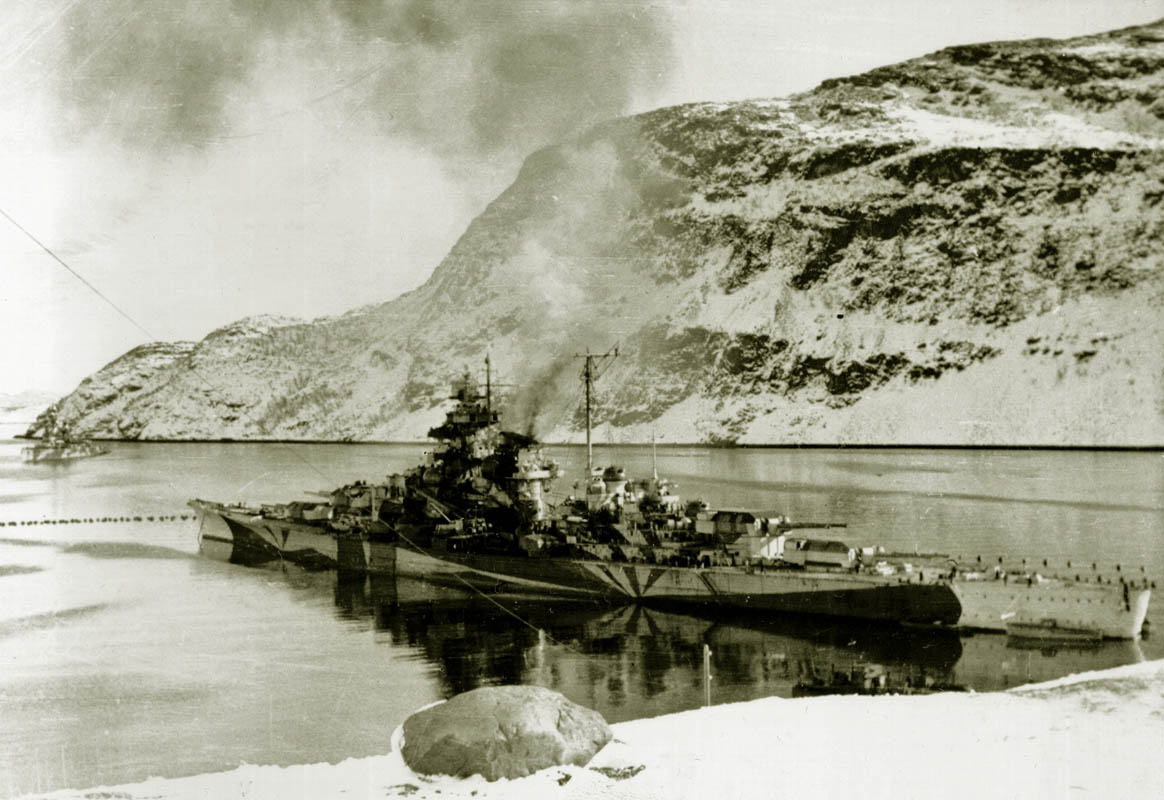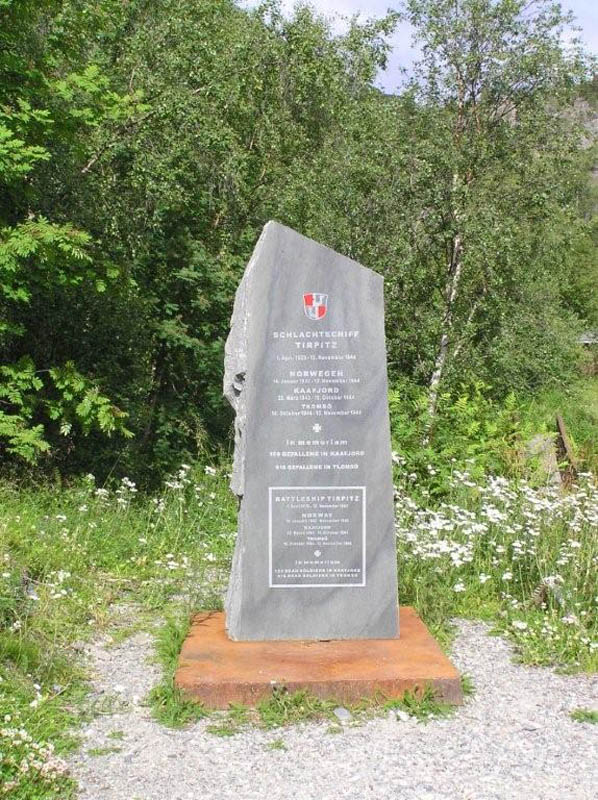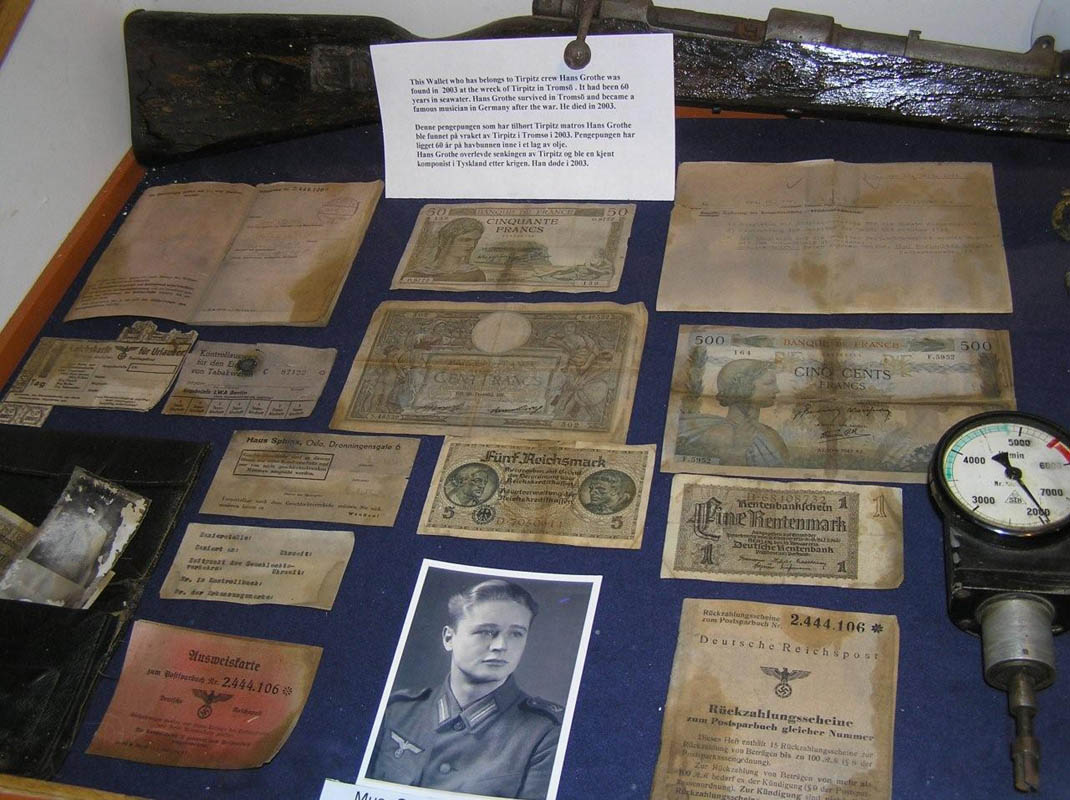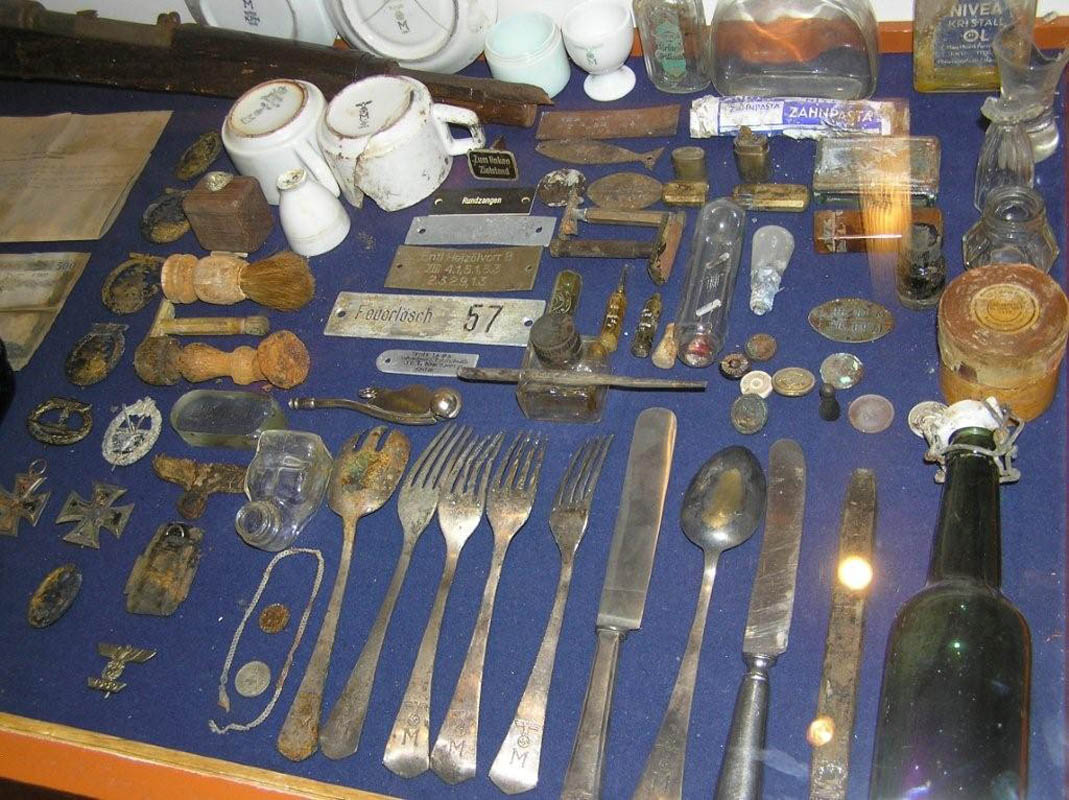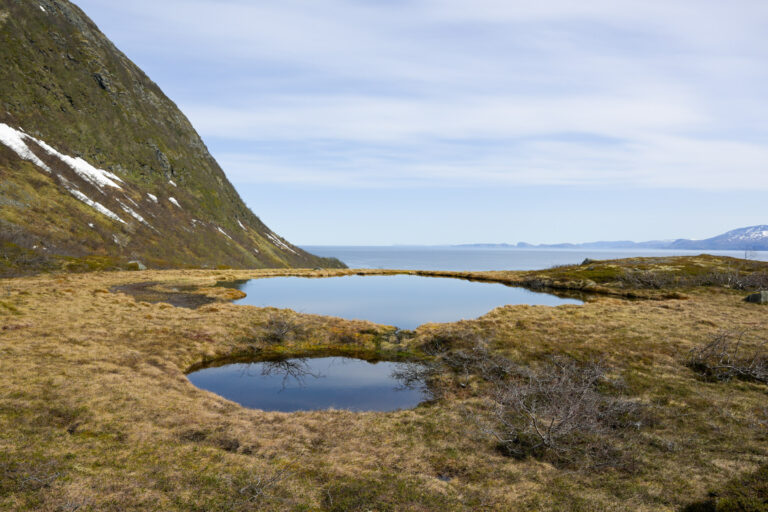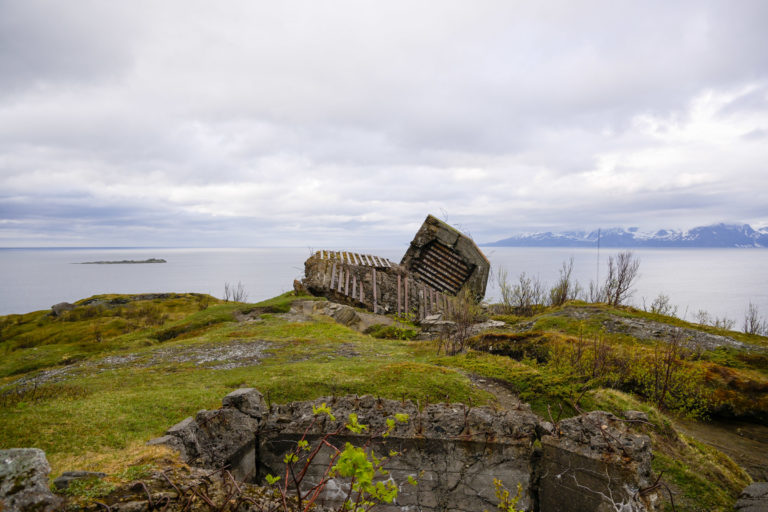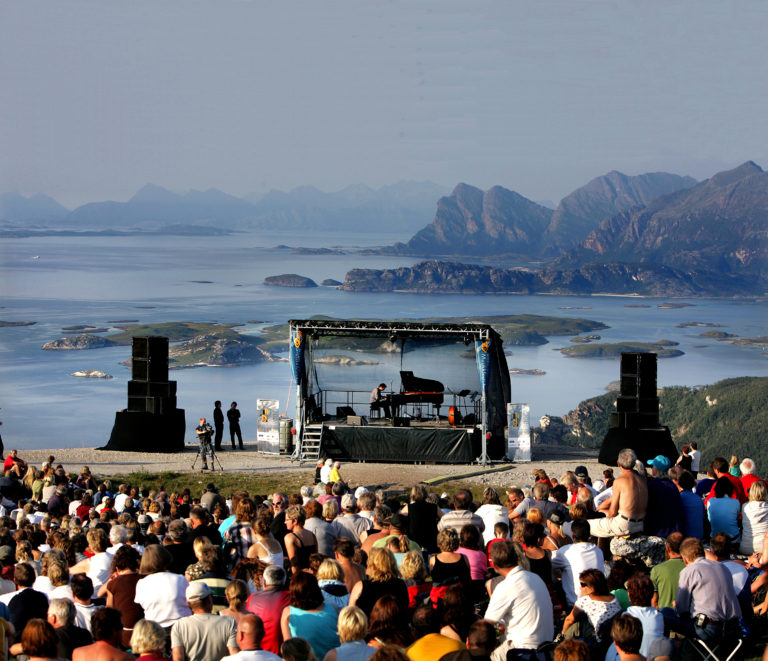Tirpitz was an enormous battleship in every way. With a length of 251 metres (823 ft), Tirpitz weighed over 50,000 tons when fully loaded. The steel in the hull was 30 cm (12”) thick. Tirpitz had eight 38 cm (15”) guns, some of the biggest naval guns ever built. The vessel had a crew of more than 2,600, including 100 officers. With a speed of 30 knots, Tirpitz was twice as fast as the Hurtigruten coastal express ships, which were faster than any of the Allied warships. All in all, Tirpitz was a formidable weapon.
The Murmansk Convoys
Why would the Third Reich have wanted to send its largest warship to a remote spot like Northern Norway? The answer was the Arctic convoys, the cargo ships full of tanks, ammunition and another war materiel that had been manufactured in Britain and the USA and sent to Murmansk to strengthen the Soviet Union’s war effort. Hitler, of course, wanted to stop these convoys. The idea was also to keep the Allied naval forces occupied and prevent an Allied attack on Nazi-occupied Norway.
Frequently asked questions
Tirpitz was shot down in Kåfjord Northern Norway. A fjord just outside Tromsø, the biggest city in all of Northern Norway.
When first made, they were both more or less equal. However, Tirpitz was upgraded during the 2nd world war, and became 2000 tons heavier than Bismarck.
The ship itself is removed, and the few parts left are on the bottom where it was bombed. However, from the air, you may see several bomb craters around where the ship sank. Some of the craters are on land, and some of them are in the fjord.
After the bombing, the ship was dismantled. Today, the ship is still used for other purposes, like in Oslo the capital of Norway, where plates from the ship are used for road building purposes.
Hunkered down in the Altafjord
Tirpitz was sent to Norway in January 1942, and lay moored in the Trondheimsfjord for some time. In March 1942, she was attacked for the first time by British aircraft, although the strikes were unsuccessful. In September 1942, Tirpitz attacked the mining communities on Svalbard (Spitsbergen), the only major attack for which the vessel was responsible. Nevertheless, from March 1943 Tirpitz spent most of her time in Kåfjorden in Alta because of a fuel shortage. Kåfjorden was a long way by air from Britain, and the approach to the fjord was easy to protect. Tirpitz was therefore well protected and was a constant threat to the British and Soviet naval forces.
Operation Source
Winston Churchill regarded Tirpitz as the primary threat to Allied shipping, and so the British pulled out all the stops in an effort to sink the vessel. In September 1943, British midget submarines slipped under the anti-submarine netting in Kåfjorden, and succeeded in a daring manoeuvre in planting explosive charges on the ship’s hull. The explosions did not go as planned, however. They cut an 18 meter-long gash in Tirpitz’s side, and failed to disable her totally. The repairs to the vessel were completed in April 1944.
More attacks
Between April and October 1944, the Allies carried out six bombing attacks on Tirpitz, although none put her out of action completely. However, the attacks necessitated a constant stream of repairs, which proved a great strain on a Germany with scanty resources. The occupying forces were also in the process of retreating from Finnmark. And so Tirpitz was moved to Håkøybotn near Tromsø in October 1944 to function as a floating fortress at the new front line.
Death in Tromsø
On 12 November 1944, a squadron of 32 British Lancaster bombers flew across Swedish territory up to Tromsø. With them, they had the so-called Tallboy bombs, five-ton bombs designed to penetrate the heavy steel on Tirpitz’s hull. Tirpitz was hit three times, capsized and sank in only 11 minutes. It is difficult to estimate the exact number of dead, but it is somewhere between 950 and 1,200. Two hundred men were saved from the ship. Tirpitz was finally put out of action and lay in shallow waters with its hull in the air.
Tirpitz memories in Northern Norway
A museum dedicated to the Tirpitz has been created in a former German barracks building in Kåfjorden in Alta; see the website at http://tirpitz-museum.no. Here the story is told of the many daring attacks on the Tirpitz in the Altafjord, using many objects and images from the period. Tromsø War Museum, http://www.tromsoforsvarsmuseum.no, which is housed in a WWII bunker, tells the story of the dramatic sinking of the Tirpitz. Both museums have a large number of objects from the Tirpitz, and the history of the Tirpitz is placed in a context with other events in the region during WWII. A modest memorial stone stands on a beach on the little island of Håkøya, the nearest possible place to the spot where Tirpitz was sunk. The rusty remains of the anti-submarine netting around the ship can still be seen. The vessel itself disappeared long ago, having been broken up after the war, which took ten years to complete.
